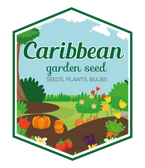
Zuni Shalako Bean Seed, Non-GMO,Heirloom Grown Organically !
- Get free shipping to lower 48 states on orders $54.95+ (Most Items), excluding live plants, plant bulbs, and black plastic nursery crate.
- Most orders are processed by the next day
- Select your desired size and/or color from the available options.
DO NOT plant them too early. They will rot in cool, damp soil.
Plants reach twenty to twenty four inches in height. Its white seeds are an excellent choice for baked beans or soups. More tender and cook more quickly than Navy Beans.
When bush beans begin producing they often come in all at once. Staggered planting, every 2 weeks, will keep your bush beans going longer. Beans like a moderately rich soil with a slightly acidic pH of about 6.0 to 6.2.
They prefer a loose, moist soil. Plant after all danger of frost is past.
Plant bush beans in either rows or blocks, with 4-6 inches between each seed. Plant the seeds 1-2 inches deep and be sure to water the soil immediately and regularly, until it sprouts.
HARVESTING
Harvesting beans is an ongoing process. You can start to harvest anytime, but gardeners usually wait until the beans begin to firm up and can be snapped. They are generally about as think as a pencil then. Donât wait too long, because beans can become overgrown and tough almost overnight. Harvest by gently pulling each bean from the vine or by snapping off the vine end, if you are going to be using the beans right away.
SAVING SEEDS
It is a suggested that you earmark a couple of plants at the beginning of the season for seed saving. Donât pick ANY pods from them to eat - just pick the crisp brown pods at the end of the season. Donât feed them, or water them unless it is very dry - as this can encourage leafy growth rather than pod development. There is no point in picking green pods as the seeds are not mature enough at this stage.
Materials: stew,soup,garden,heirloom,cooking,recipes,salads,low corb,weight loss Select your desired size and color from the available option
LET OUR CUSTOMER SPEAK FOR US

![[Seeds] - Caribbeangardenseed](http://caribbeangardenseed.com/cdn/shop/files/gift-card-gift-card-1_1024x1024_dfa857db-9150-4315-a362-7f0bb3fb9c47_60x28.png?v=1722895789)




